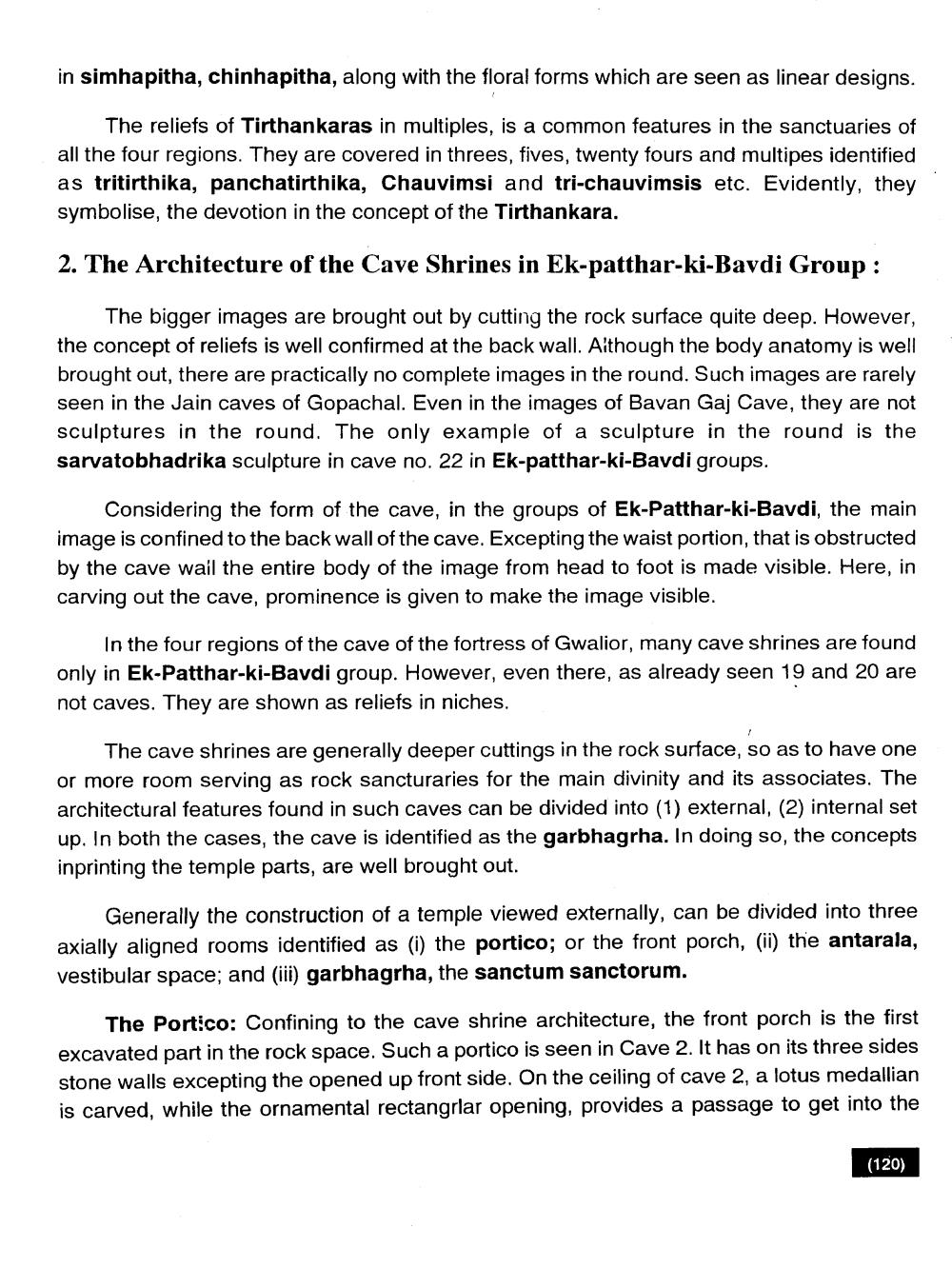________________
in simhapitha, chinhapitha, along with the floral forms which are seen as linear designs.
The reliefs of Tirthankaras in multiples, is a common features in the sanctuaries of all the four regions. They are covered in threes, fives, twenty fours and multipes identified as tritirthika, panchatirthika, Chauvimsi and tri-chauvimsis etc. Evidently, they symbolise, the devotion in the concept of the Tirthankara.
2. The Architecture of the Cave Shrines in Ek-patthar-ki-Bavdi Group :
The bigger images are brought out by cutting the rock surface quite deep. However, the concept of reliefs is well confirmed at the back wall. Although the body anatomy is well brought out, there are practically no complete images in the round. Such images are rarely seen in the Jain caves of Gopachal. Even in the images of Bavan Gaj Cave, they are not sculptures in the round. The only example of a sculpture in the round is the sarvatobhadrika sculpture in cave no. 22 in Ek-patthar-ki-Bavdi groups.
Considering the form of the cave, in the groups of Ek-Patthar-ki-Bavdi, the main image is confined to the back wall of the cave. Excepting the waist portion, that is obstructed by the cave wail the entire body of the image from head to foot is made visible. Here, in carving out the cave, prominence is given to make the image visible.
In the four regions of the cave of the fortress of Gwalior, many cave shrines are found only in Ek-Patthar-ki-Bavdi group. However, even there, as already seen 19 and 20 are not caves. They are shown as reliefs in niches.
The cave shrines are generally deeper cuttings in the rock surface, so as to have one or more room serving as rock sancturaries for the main divinity and its associates. The architectural features found in such caves can be divided into (1) external, (2) internal set up. In both the cases, the cave is identified as the garbhagrha. In doing so, the concepts inprinting the temple parts, are well brought out.
Generally the construction of a temple viewed externally, can be divided into three axially aligned rooms identified as (i) the portico; or the front porch, (ii) the antarala, vestibular space; and (iii) garbhagrha, the sanctum sanctorum.
The Portico: Confining to the cave shrine architecture, the front porch is the first excavated part in the rock space. Such a portico is seen in Cave 2. It has on its three sides stone walls excepting the opened up front side. On the ceiling of cave 2, a lotus medallian is carved, while the ornamental rectangrlar opening, provides a passage to get into the
(120)




